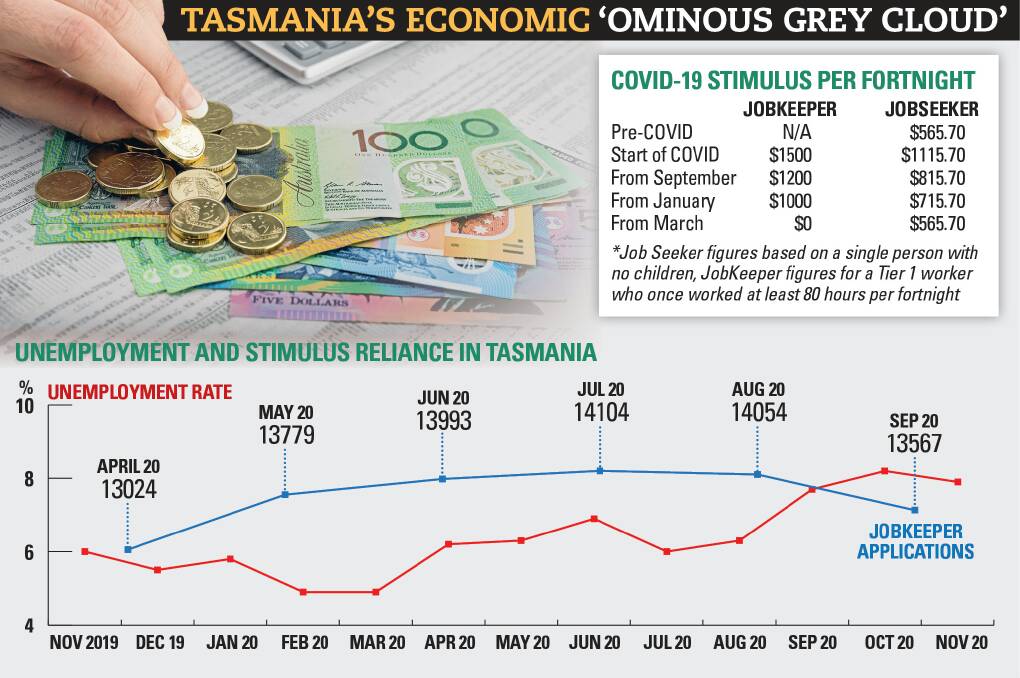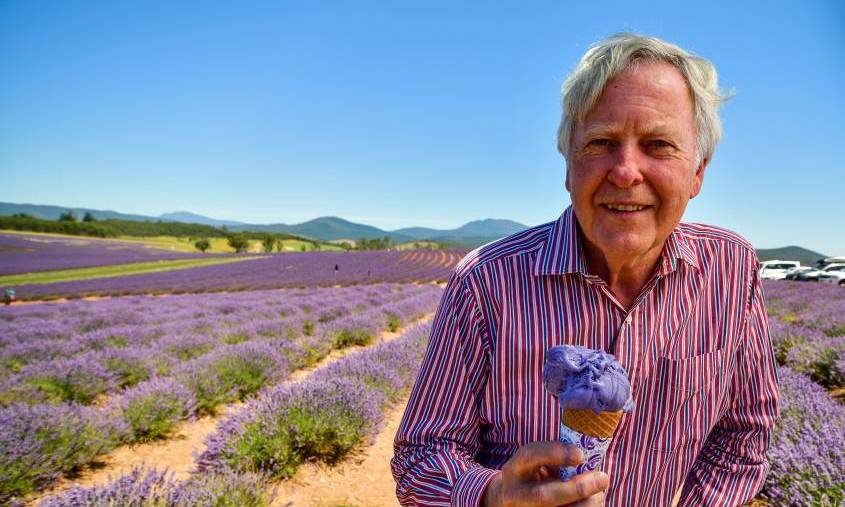
D-Day is looming for the Tasmanian economy with the close of coronavirus JobKeeper and JobSeeker stimulus measures drawing increasingly close.
Subscribe now for unlimited access.
or signup to continue reading
A Deloitte report yesterday foreshadowed an "ominous grey cloud" looming over the rebound of the Tasmanian economy as the end of the stimulus measures coincided with rising unemployment rates and JobKeeper applications and traditional economic heavyweights remaining devastated.
Currently, the JobKeeper subsidy affords businesses the ability to pay workers $1000 each fortnight from the federal government coffers - rather than their own stagnated savings.
IN OTHER NEWS:
It provides workers income despite their workplace suffering a significant downturn in income which may have otherwise led to unemployment. For workers that were not full-time before COVID-19 hit, this payment is significantly lower at $650 per fortnight.
Job seekers get a $150 on top of their typical government payment, meaning a single person with no dependents receives about $715 in their pocket from the government each fortnight.
The total of this payment can be as high as about $950 if you are a carer, or as low as $660 if you are part of a couple. The $150 stimulus is the same regardless.
But come March the $150 payment will be gone, and the $1000 JobKeeper stimulus is due to be wiped from the government's books.
RELATED NEWS:
In September there were 13,657 applications for JobKeeper in Tasmania, and since its advent in April there have been over 80,000.
There are also about 50,000 Tasmanians either out of work or looking for work and the state is responsible for the worst unemployment rate in the country with it languishing at 7.9 per cent.
The "ominous grey cloud" has prompted questions from state and federal political and lobbying bodies about what certainty can be offered as March rolls around, but Premier Peter Gutwein insisted he remains optimistic about the state's economic situation.
"As we look to the year ahead, my government is focussed on growing our economy, getting more Tasmanians back into work and bringing our unemployment rate down," he said.
The budget is our plan for economic recovery and we are committed to delivering it.
- Premier Peter Gutwein
"Nearly three quarters of Tasmanians have returned to work since May and 2,000 jobs were added in November. In December, job vacancies were 20.7 per cent higher than the year before."
The report mentioned that traditional Tasmanian economic heavy lifters - tourism, international education and hospitality - were the hardest hit by the pandemic. They were also the most reliant on the government stimulus.
In November Tasmanian Tourism Council chief executive Luke Martin said, "50 per cent of industry have still got some staff on JobKeeper after six months".
Those concerns persist.
Bridestowe Lavender Estate relies heavily on those traditional heavyweights. Owner Robert Ravens said his business would have been debilitated without the JobKeeper payments, and with their impending removal his concerns were grave.
"JobKeeper saved us from having to take draconian measures with staff and so we've had the right people in place to carry us," he said.
In March, when JobKeeper comes to a grinding halt, we genuinely will be concerned about employment.
- Bridestowe Lavender Estate owner Robert Ravens
Mr Ravens said the impact of COVID-19 was double-barrelled because they had to indefinitely defer capital works they had planned - the type of investments that will need to carry the Tasmanian economy without tourism leading the way.
He said losing JobKeeper would mean for Bridestowe those works would need to be deferred again, leaving a major investment to dry out and withdraw money from the Northern economy.

The Estates allows free entry to Tasmanians and relies on individual spend to keep them afloat, so Mr Ravens has the perspective to realise that the problem extended to how much money local tourists had in their pockets.
"Spend per visit is down. Low spend per capita spend is conspicuous," he said.
Launceston tour business Prestige Leisure Tours owner Amonn Seddon said his business relied on 30 per cent of its business from international tourists and was thankful for local tourism for carrying the load.
Fighting Back against family violence
He said his business had made it through 2020 on the back of an always busy holiday period, but the literal grey clouds of Winter were troubling.
"The challenge going forward is the majority of us rely on a good December, January and February to survive through the winter," he said.
With the current situation how it is we aren't going to make anywhere near the amount of money we normally would.
- Prestige Leisure Tours owner Amonn Seddon
Mr Seddon said the removal of JobKeeper with the impacts of COVID-19 still impacting his business on a daily basis harked a return to something similar to last March when the virus was running rife and enfeebling his livelihood. In March last year, he said, to stay afloat he had to "chip into the business saving" and "any reserves we had were completely depleted".
Tasmanian Hospitality Association CEO Steve Old said there were a lot of hospitality business still relying on JobKeeper.
"We're not out of the woods by any stretch and we believe there is definitely a need for the JobKeeper program to carry on," he said.
"The end result is you've got a subsidy that is propping up a lot of businesses ... if that suddenly gets taken away at the end of March I think the reality is going to hit a lot of these businesses."
Liberal Bass MHR Bridget Archer said the federal government would "continue to assess the situation and support Australians back into work. My focus is on working on behalf of Northern Tasmanians to identify any further support mechanisms that could be considered."
What do you think? Send us a letter to the editor:














